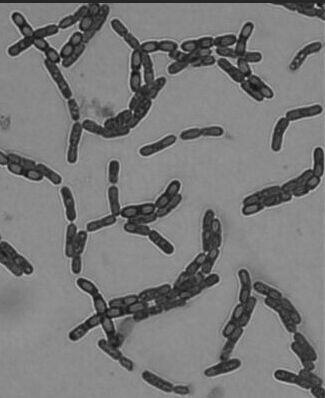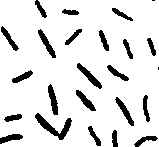A Strain of Bacillus arborii j5 and Its Application
A technology of Bacillus aristolochia and strains, applied in the field of microbial resources, can solve the problems of limited laboratory and pot experiment stage, etc., and achieve the effect of good pot experiment effect, increase of ear thickness, and huge market application prospect.
- Summary
- Abstract
- Description
- Claims
- Application Information
AI Technical Summary
Problems solved by technology
Method used
Image
Examples
Embodiment 1
[0038] The present invention will be further described in detail below in conjunction with the accompanying drawings of the specification and specific embodiments. The embodiments are only used to explain the present invention and are not used to limit the scope of the present invention. The test methods used in the following examples are conventional methods unless otherwise specified; the materials and reagents used, unless otherwise specified, are commercially available reagents and materials. Example 1 Isolation of strains
[0039] S1. Separation: Take the vegetable garden soil of Yuejin North Farm of South China Agricultural University, Tianhe District, Guangzhou City, Guangdong Province as the screening soil sample, and accurately weigh 10.0g of the screening soil sample by flat coating method and put it into a 250mL triangle filled with 90mL sterile water In the bottle (add glass beads), shake on a shaker for 30 minutes to fully disperse the cells, and let stand for 20-30 ...
Embodiment 2
[0041] Example 2 Characterization of J5 strain
[0042] Morphological characteristics of the bacteria: Gram-positive bacteria with spores. The bacteria are rod-shaped, sporty, obligate and aerobic. See photos of spore staining figure 1 .
[0043] Colony morphology characteristics: The colonies formed after 24 hours of culture on beef extract peptone medium are round or irregular. After 48 hours, the colonies are all round, slightly yellow, with a diameter of about 2-3mm, with irregular edges, flat and moist.
[0044] Growth characteristics: in a liquid medium of 3.0 g beef extract, 10.0 g peptone, 5.0 g sodium chloride, and 1L water, at a speed of 113 rpm, a temperature of 30°C, and an initial pH value of 7.0, cultured for 18 hours, measured The number of viable bacteria is (1.94±0.60)×10 8 cfu·mL -1 .
[0045] Physiological and biochemical characteristics: Refer to the routine experimental methods of "Berger's Bacteria Identification Manual" to perform some physiological and bioch...
Embodiment 3
[0049] Example 3 J5 bacteria produce long prime effect
[0050] Qualitative determination of auxin: J5 bacteria were inoculated into 50mL LB liquid medium containing L-tryptophan (100 µg / mL), and cultured on a shaker at 30°C and 150r / min for 24h. Take 300 μL of culture solution drop on the white ceramic plate, and add 300 μL of Salkowski colorimetric solution at the same time, set 300μL of sterile LB medium as a negative control, 10, 20, 30, 50 (μg / mL) auxin colorimetric solution As a positive control. Place the white ceramic plate at room temperature and protected from light for 30 minutes and observe. If the color turns red, it means that long pigment can be produced. See the test results Figure 4 .
[0051] Quantitative determination of auxin: J5 bacteria were inoculated into 50mL LB liquid medium containing L-tryptophan (100 µg / mL), and cultured in three replicates at 30°C and 150r / min shaker for 24h. Centrifuge the culture solution at 8000×g for 10 min, add 4 mL of the sup...
PUM
| Property | Measurement | Unit |
|---|---|---|
| diameter | aaaaa | aaaaa |
Abstract
Description
Claims
Application Information
 Login to View More
Login to View More - R&D
- Intellectual Property
- Life Sciences
- Materials
- Tech Scout
- Unparalleled Data Quality
- Higher Quality Content
- 60% Fewer Hallucinations
Browse by: Latest US Patents, China's latest patents, Technical Efficacy Thesaurus, Application Domain, Technology Topic, Popular Technical Reports.
© 2025 PatSnap. All rights reserved.Legal|Privacy policy|Modern Slavery Act Transparency Statement|Sitemap|About US| Contact US: help@patsnap.com



